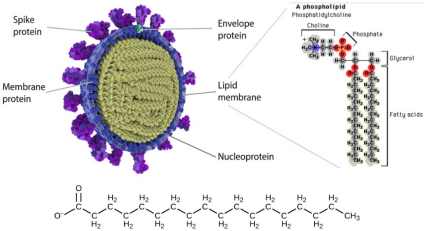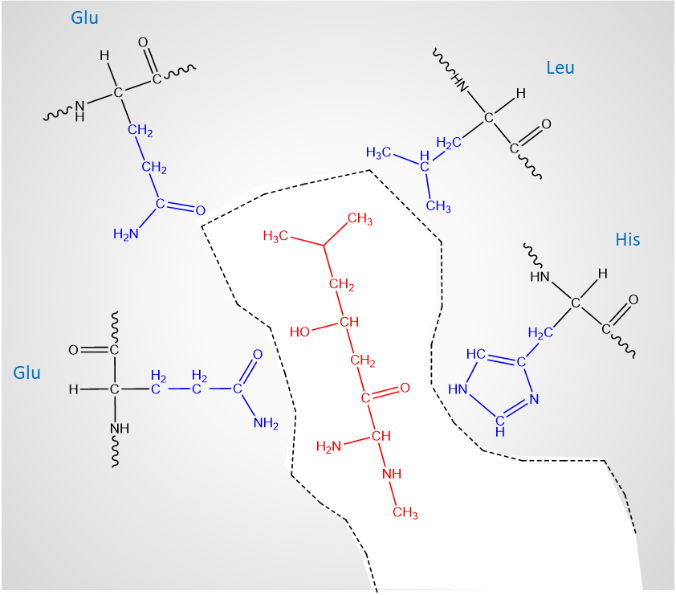Appliedpractice&problem-solving BIO0800
- Subject Code :
BIO0800
BIO0800SA2
Appliedpractice&problem-solvingworkbook
Deadline-Sunday13thApril,23:59onlineviaTurnitin Total 1250 words (+/- 10%)
-Excluding:referencelist,figures,tables,captions,equations,questiontext.
-Including:in-textcitations,headings.
-Individualwordlimitsapplyperquestion.
Learningoutcomesassessed:
LO2Distinguishbetweendifferenttypesofchemicalbondingandforcesactingbetween molecules.
LO3Describethestructureandfunctionoforganicmoleculesanddistinguishbetweendifferent types of organic reactions.
LO4Describethemolecularstructureofbiomoleculesinrelationtotheirbiologicalfunction.
LO5 - Apply fundamental concepts in physical chemistry to solve problems related to energetics, kinetics and chemical equilibria.
Markingcriteria:
|
Criteria |
1-4First |
5-8UpperSecond |
9-12LowerSecond |
13-16Third |
17-20Refer |
|
70%+ |
60%-69% |
50%-59% |
40%-49% |
Lessthan40% |
|
|
Theory discussion: Demonstrate understandingof the topic with chemicaldetailin explanations.(80%) |
Demonstrates understanding ofunderpinning theory with logical and detailed, complete explanations.
Excellentlevel of chemical detail used, tailoredtothe specific context. Clear critical evaluationand conclusions of scenario. |
Accurate theory and answerswith some explanations provided.
Good level ofchemical detail to support answers in depth.
Some evaluation and reflectionin answerthat comes to a clear conclusion. |
Mostly accurate answers,show reasonable understanding of the topic. Most answers have good chemicaldetail to support reasoning.
Limitedcritical evaluation of scenario and basic conclusions drawn. |
Some inaccuracies, or irrelevant information, but basic understanding remainsclear. Good attempts of complete explanations withchemical detail.
Lacks any critical evaluation or discussion in relation to context.Basic conclusions provided. |
Lack of insight offered or frequentmistakes and misunderstanding of theory.
Limited detail withinadequate reasoning and chemical detail. No clear final conclusions or reflectiononthe context. |
|
Writing &presentation: Technical proficiencyinthe English language & professional IT formatting.(10%) |
Succinct writing style, appropriate scientific terminology and well- structured answers appropriately weighted.
Professional formatting, effective figures, original and personalised content. |
Clear answers, following logicaland clear structure. Correct use of key scientific terminology. Neat and clear formatting throughout. |
Clear answers, but lacks refinement with some repetition or aspectsofpoor structure. Suitable scientific terminology.
Aspects of formattingand ITpresentation could be improved. |
Poorweighting structured towards aspects of answer. Attemptedbut inaccurate or limited use of scientific terminology.
Limited attempt at suitable formattingand IT presentation. |
Lacks suitable contentstructure and clarity.
Inaccurate or limited use of scientific terminology and many grammatical errors.Originality of writing is not evident. Messy,unclear formatting. |
|
Literature review:
References& formatting. (10%) |
Effectiveuseof literature to evidence and support.
Balanced representation of evidence from high qualitysources. Immaculate reference formatting;in- text and list. |
Suitableuse of relevant, wider literatureto support. Reputable sources used, with good coverageof literature.
Minimal errors in reference formatting. |
Limiteduseof relevant literature to support discussion of answers. Some poor- qualitysources used.
Errors in referencing format,in-text or list. |
Minimal demonstration of further reading. Out-dated,not peer reviewed orpoor-quality sources relied upon.
Incorrect,but attempted referencing& formatting. |
Does not use furtherreadingor referencing to support answers.
Notattempted referencing where appropriate. |
Questions:
|
Question# |
Topic |
Marks |
LOs |
Wordlimit |
|
1or2 |
TherapeuticsorViruses |
30 |
2,3,4 |
400 |
|
3 |
Drugdesign |
40 |
2,3,4 |
450 |
|
4or5 |
ReactionyieldorDefencereaction |
30 |
3, 5 |
400 |
Q1(30marks):Therapeutics
(OptionaltoselectQ1orQ2)
YouhaveaprospectivedrugwithapKaof4.5fromacarboxylicacidgroup.
- ConsiderhowanychargeswithinthestructuremayvaryaccordingtosurroundingpHlevels.
- Suggesthowthiscanimpactthehydrophilicandlipophiliccharacterofthedrugunder certain conditions.
- Apply thisinformationtoexplainwhetherthedrugwouldbe betterabsorbediftakenonan empty or full stomach where pH varies.
Aspartofyourexplanation,includechemicaldetailanddemonstrateunderstandingonthe following:
- Dissociation,pH,KaandpKa
- Hydrophilic&lipophilicforcesactingbetweenmolecules
- Cellmembranecompositionandmolecularstructureinrelationtobiologicalfunction
Q2(30marks):Viruses
(OptionaltoselectQ1orQ2)
The structure below shows a virus containing hydrophobic amino acid spike proteins and an expanded sectionofa lipidmembrane. Guidance has been providedto stop thespread ofthisvirus, suggestinghandwashingforatleast30seconds,withtheuseofsoap.However,thisguidanceisnot being followed. Produce a summary to:
- Fullyexplaininchemicaldetailwhyitisimportanttousesoap
- Fullyexplaininchemicaldetailwhytimetakenisimportant
Aspartofyourexplanation,includechemicaldetailanddemonstrateunderstandingonthe following:
- Forcesactingbetweenthesemolecules
- Hydrophobic vs hydrophilic
- Molecular structure of biomolecules in relation to biological function

Figure1:Above:virusstructurewherespikeproteinsarehydrophobicandincludingexpandedlipidmembrane structure. Below: typical structure of soap components.
Q3(40marks):Drugdesign
The figure below shows an active site region of an enzyme. The grey region contains the protein chain of amino acids withonly selectedkey structures displayed for proximity to active site surface (R-groups in blue). The active site binding pocket space in white contains the red structure that represents a prospective drug. The drug is in development to selectively bind this target as an inhibitor.Assuchitrequirescomplementaryshapeandbindinginteractions.Note,atthisproposed stage of development water molecules and pH do not require consideration. Provide a review of:
- Thecurrentinteractionsthataretakingplacebetweendrugcompoundandactivesite.
- Suggestanystructuralchangestothedrugthatcouldenhancebinding,withrationale.
Aspartofyourexplanation,includechemicaldetailanddemonstrateunderstandingonthe following:
- Enzymestructure&function
- Functionalgroups
- Hydrogenbonddonorsandacceptors
- Intermolecularforces
- Include a figure to illustrate bonding. You must apply to this given case.

Figure2:Figureofenzymekeyactivesiteresiduescreatingbindingpocket.Drugstructureshowninred.
Q4(30marks):Reactionyield
(OptionaltoselectQ4orQ5)
Sulphur dioxide reversibly reacts with oxygen to produce sulphur trioxide which has a range of industrialapplications.Thestandardenthalpiesofformationareshownbelowandvanadium(V) oxide acts as a catalyst.
|
Compound |
?Hf(kJ/mol)at298K |
|
Sulphurdioxide |
-296.8 |
|
Sulphurtrioxide |
-395.7 |
Provideasummaryof:
- Rational and cost-efficient conditions for this reaction, on a large scale looking to optimise sulphur trioxide yield.
Aspartofyourexplanation,includechemicaldetailanddemonstrateunderstandingviathe following:
- Balancedequationofreaction
- Calculationofenthalpychangeofreaction(includeworkingout)
- Explaintheimpactofchangesintemperature,pressure,reactantconcentration&product concentration.
Q5(30marks):Defencereaction
(OptionaltoselectQ4orQ5)
The bombardier beetle defence mechanism is to combine hydroquinone with hydrogen peroxide intoareactionchambercontainingcatalaseandperoxidases.Thequinoneproducedcanbesprayed out, acting as an irritant to the eyes and respiratory system of other vertebrates. Under the given conditions, the enthalpy change of reaction is -202.8 kJ/mol and Gibbs free energy is negative.
Figure3Reactioncomponents,lefttoright:Hydroquinone,hydrogenperoxide,quinone,water.
Explainthechemicalbasisofthisreaction.Aspartofyourexplanation,includechemicaldetailand demonstrate understanding via the following:
- A balanced reaction equation.
- Any changes in oxidation and/or reduction (show working out and use structures provided).
- Produce a fully labelled energy level diagram for enthalpy change of reaction, including catalyst impact.
- Explain how the beetle is able to spray out the reaction product with spontaneity, enthalpy and pressure changes.

